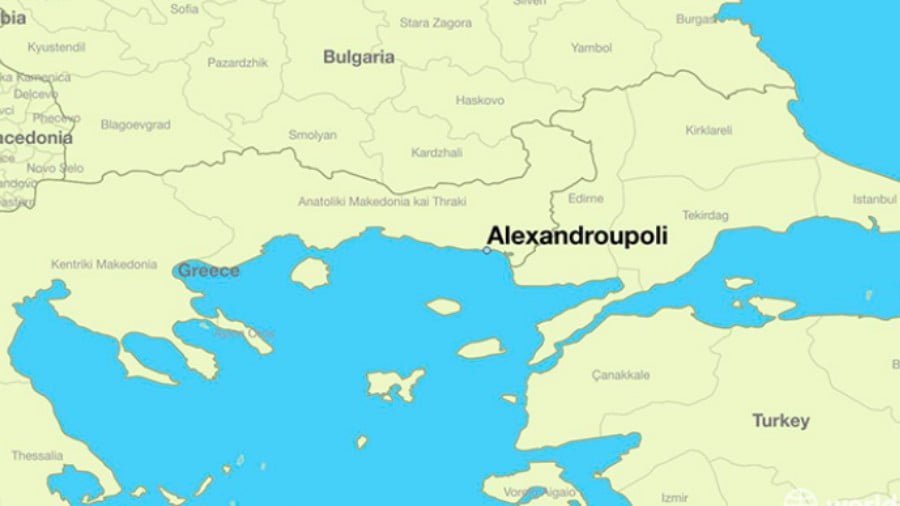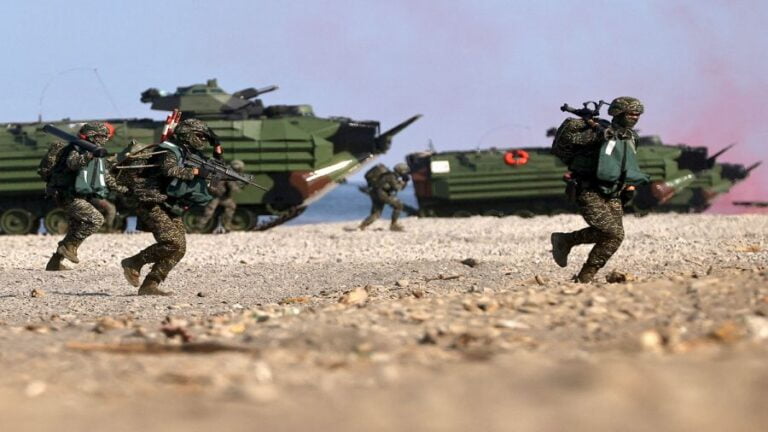Saudi Arabia on the Cusp of Fundamental Changes
The new year of 2017 does not look very promising for either the Saudi Arabia or its King Salman bin Abdulaziz Al Saud, the last surviving son of the first Saudi King Ibn Saud. In future, once Salman bin Abdulaziz Al Saud is gone, the Kingdom will be inherited by the younger generation of the royal family. Both the Arab and the Western mass media are warning Saudi Arabia of the impending doom for its explicit support of Libyan, Syrian, Iraqi, Yemeni, Ethiopian, Filipino and Lebanese revolts that resulted in civil wars and caused a religious strife in these countries.
A major blow might however come from within the country if a dynastic struggle for the royal throne begins. It is well known that King Salman introduced changes to throne succession order and replaced his 31-year-old son Mohammed bin Salman with his nephew Mohammed bin Nayef, having named the former as deputy crown prince. While King Salman is at the pinnacle of power, this new arrangement is likely to be observed. Persistent rumors spreading in the Kingdom have it however that the 80-year-old King Salman, who is getting too old to effectively carry out his duties, might be pressured by his family into swapping Mohammed bin Nayef for his son, Mohammed bin Salman.
If that happens, Mohammed bin Salman would accumulate a lot of reins of power in his hands and become the next Saudi King strong enough to bring other powerful Saudi clans on their knees. Today Mohammed bin Salman is already in charge of the Ministry of Defense, the Saudi Council of Economic and Development Affairs and even chairs the mighty and affluent oil company Saudi Aramco.
Ultimately, the fact that Mohammed bin Salman defines the Kingdom’s foreign policy priorities proves that he is an eager candidate for the throne. Whether with or without consent of his father, he has been extending financial and military support to the jihadist militants in Syria and Iraq fueling bloody civil wars in these countries. Having ordered the Saudi army to interrupt the revolt of the Houthis, he basically sparked a civil war in Yemen. He has also been supporting the ruling Sunni government in Bahrain responsible for bloody suppression of the Shia Muslim majority, constituting 70 percent of the entire population of this island kingdom.
But perhaps this young Bedouin’s son’s (Mohammed bin Salman’s) active support of warmongering Saudi groups seeking dangerous military confrontation with Iran is his most alarming affair. Hardly anybody doubts that the Saudi Kingdom would crumble as a house of cards after the first military clash. And no massive supply of American and western arms under disguise would help the “valiant Saudi falcons”. One should employ his good judgment when assessing Iran’s capabilities and pursue a balanced foreign policy based on the respect for mutual interests instead of engaging in an open propaganda of war.
However, until very recently, there were plenty of signs of Saudi military hysteria: numerous billboards in the Saudi capital and other cities displayed images of jet fighters and bombers flying past the image of the 31-year-old Prince, public channels broadcast military maneuvers, and the press published stories about accomplishments of the “victorious army”. Things are changing, and while the number of such displays is declining, and the Saudis are apparently sobering up, experts say that some strata of the Saudi society still express militaristic sentiments for Saudi intervention and the war in the whole.
At the same time, Saudi Defense Minister is pathetically assuring that he is making every effort to curb the spread of a hostile Iranian influence. But no matter what he does or says, Yemen’s Houthi rebels, whose relationship with Iran is disputed, are, for example, still controlling most of their country. Lately, they have been attacking elite Saudi troops in the Saudi provinces of Najran, Asir, and Jizan (in the past, these territories used to belong to Yemen and were controlled by Sana). Numerous photographs published in the global media depict burning American Abrahams tanks attacked by poorly armed Houthi rebels in slippers.
All these incompetent underdeveloped campaigns have literally ruined once fabulously wealthy Saudi Kingdom. The country’s attempts to push competitors out of the global oil market have caused a sharp drop in the prices of the “black gold” and subsequently slashed the Royal regime’s revenues, downing it to the ranks of mid-income states. The Saudi Kingdom had to dramatically (at least for an Arab country) cut fuel and energy subsidies. For example, last year the price of diesel fuel rose by 79%, while gas and petrol became 67% more expensive. According to the estimates of analysts from the consulting company Capital Economics, the Saudi Kingdom is expecting to save up to $7bn in 2016 once it revises its subsidy programs.
Riyadh is planning not only to reduce costs, but also gradually privatize national companies, including Saudi Aramco. The new policy is downgrading the quality of life of inhabitants of the Royal Palace and the dwellers of ordinary houses alike. Today the Saudis are worried that they might be deprived of even such an indispensable service as a free health care. Cheap gasoline, which used to cost less than water (20 cents per liter), regular increases in wages and many other luxuries of the “Arabic socialism” are now becoming “a thing of the past”.
Today Saudi Arabia, which is bearing the consequences of poor foreign and military policy, is also at risk of revolts led by the suppressed local Shia population. Daesh, which has been suffering defeats from the Russian Aerospace Forces in Syria, is urging to “set the holy cities of Mecca and Medina free” from the “Saudi usurpers”. (For centuries, Mecca and Medina were ruled by the Hashemite dynasty. Only in the 1920s, the Al Saud family, supported by the Britons, captured the cities and instantly proclaimed itself the descendants of the Prophet Muhammad.)
Ultimately, if an internal conflict breaks out in Saudi Arabia, Mecca and Medina might gain independence. In this case, they would most probably assume the duty of safeguarding the Islamic holy sites and undertake to protect the Muslim pilgrims. Then, the Organization of Islamic Cooperation (OIC) and other legitimate Islamic organizations might step in and declare these holy cities a “neutral zone” no longer controlled by Riyadh or the Wahhabi religious authorities.
Saud bin Nayef, Governor of the important Eastern Province and a son of the former Crown Prince of Saudi Arabia Nayef bin Abdulaziz, who is also claiming the Kingdom’s throne, might take advantage of the split in the Saudi royal family. The Eastern Province is not only the center of the Saudi oil industry employing tens of thousands of foreign workers, but also a home to the vast number of Shia minority highly dissatisfied with its status in the Kingdom. The Saudi government has never conducted a census of population by religion out of fear that many country residents, especially those inhabiting the Eastern Province, might express their dissatisfaction with the results. However, even rough calculations suggest that out of 28 million Kingdom’s residents, 20 million are Saudis and 8 million are migrant workers.
Experts also believe that should other regions of Saudi Arabia, including those located on the border with Iraq, Tabuk, along the southern Jordanian border and the Gulf of Aqaba would also seek secession. But the country’s key region, the Riyadh Province, would definitely be the “ground zero” of struggle for the Saudi throne. It is quite possible that just like 100 years ago the world would witness a fierce civil strife splitting the Kingdom of Saudi Arabia into several independent states.
By Victor Mikhin
Source: New Eastern Outlook







